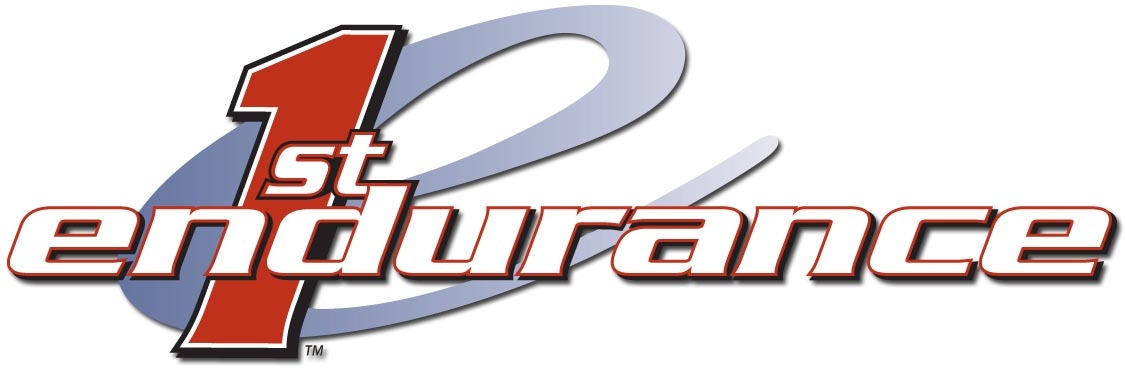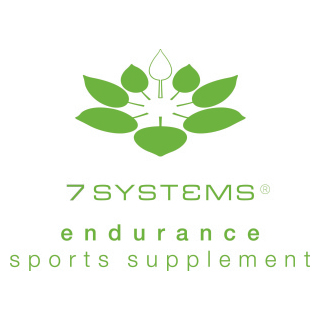Thinkers & Tinkers: TJ Tollakson of Ruster Sports

In the continuation of our “Thinkers & Tinkers” series looking at pioneering and intrepid entrepreneurs in the sport, we sit down with professional traithlete TJ Tollakson, winner and podium finisher at every distance of race in the sport to talk about the company he founded – Ruster Sports. Like many professional triathletes, TJ juggles many roles, but in what is becoming an increasingly common phenomenon, one of those roles is that of a small business owner. And like many triathletes who own their own businesses, the company TJ is a part of is also a part of the sport of he loves. Ruster Sports set out to design and make products not in any specific niche. The two products they currently make couldn't be more different. But the focus in each case is the same – think outside of the box and make something new and truly different that offers a real advantage for the end user.
After existing as a "one trick pony" for almost a year, Ruster Sports now has two products. The first is the TricaeroTop nutrition & hydration carrier which is designed to carry your fluids and nutrition in a carbon fiber shell that actually improves the overall aerodynamics of the bike and rider. And the second is the Hen House bike carrying case which is a two-bag system designed to allow you to travel with your bike without paying the increasingly absurd oversize baggage fees that airlines levy for transporting most traditional bike cases.
As I wrote in the first piece of the series, the idea behind this article is not to try and evaluate the merit or quality of Ruster Sports' products. Instead, I thought it would be more interesting to talk with TJ about what it was that led him to start Ruster Sports and to take responsibility for not only his own training and racing from the traditional fitness standpoint, but also for supplying the products that would form an essential component of his race day plan – with TricaeroTop – or in keeping his most valuable piece of equipment – his bike safe with The Hen House. There was certainly a level of risk associated with this, and I wanted to know why he was willing – and seemingly eager – to shoulder this risk.
After reading this, I hope you might be interested enough do some research on the Ruster Sports and decide for yourself whether you think there products are – or are not – worth trying.
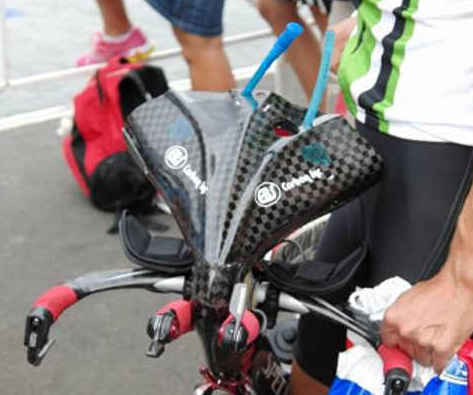
Slowtwitch: What was the genesis of Ruster Sports? Did you perceive a void in the products that were/are out there? Was tinkering and building stuff was where you were directing your energies and time away from training anyway?
TJ: I have always been a creative tinkerer and inventor, so Ruster Sports was really the culmination of years of tinkering with different products and I decided I need to start a company satisfy my desire to tinker. There is always a void in current products on the market and there are a million people with great ideas on how to make something work, or make something work better. I want to take product ideas that are currently available and make them better, but I also want to make things uniquely different. When I first started racing triathlon, I knew very little about bicycles but I was never timid to start tinkering. I can remember the first time I took apart a headset and bearings went flying all over the place. I've come a long way in my knowledge since then, but overall it is really a sense of trying to make things easier and more efficient. As an industrial engineer we are always taught to make things more efficient and that translates well into triathlon performance since efficiency is crucial for success. The name Ruster Sports came in early 2009 when I finished reading Ted Turner's book, "Call Me Ted". Ted has a life motto, "Early to bed, early to rise, and advertise like hell." While I am admittedly more of a night owl, I still enjoy getting up early to make the most of the day. Being from Iowa with a extended family involved in farming, it is easy to see the early risers always associated with the Rooster. So Ruster Sports adopted the motto, "Rise and Shine". It is about getting up and making something great.
Slowtwitch: You are an engineer and an athlete. While there are quite a few engineers-turned-bike-
specialists in triathlon, you are the only one that has decided to actually engineer something for your bike, as opposed to just applying that critical eye to the "science of cycling." What led you to make the jump from hacksawing and tweaking the products that already existed to conceptualizing and building a product from scratch? Did you engineering background help you specifically? Or was it more of a sense of the greater engineering process that you already had? How much of what you are doing did you already know how to do and how much have you had to learn as you've worked?
TJ: I started small, taking the saw and hammer to different parts of my bike. My bike mechanic in Iowa, Steve Fry, always gets a kick out of what I am trying to do with my bike. So many customers are scared about ruining, breaking, or scratching their bike, then they look over and see me with a hacksaw and hammer just banging away on my bike. When I met Eric Strauss of EBS Carbon (www.ebscarbon.com) in Boulder I took things one step further with the manufacturing of a new product. The goal was first to have a functional product to help improve my performance with a secondary goal of selling products. I have since developed a few newer products for personal use and will now be selling my newly designed bicycle travel case. My engineering background has definitely helped. As an industrial engineer I have a thorough understanding of how products are manufactured. Since I used to work for Alcoa Aluminum I have a great understanding of material science so it helps when working with various materials. I had done some work with carbon fiber, but my skill set was limited. Luckily, Eric and Dave Morse (who is now and engineer at Zipp) helped educate me on the product development and manufacturing process of the carbon parts. I was able to grasp most of it pretty quickly because of my background, but I definitely couldn't have done it without them. My latest product (Hen House Bike Case) is another example of learning the process as I go. Mark Smedley from Pika Pack Works in Salt Lake City sewed the prototype for the production case based on samples I brought in and was currently using for travel.
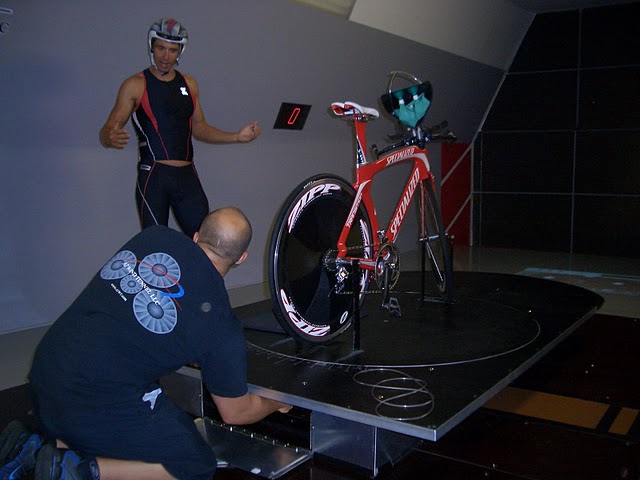
The idea for the Hen House Travel Case was a matter of necessity. I was traveling frequently on United Airlines, and when I started United was giving vouchers for free bicycle transportation to athletes staying at the Olympic Training Center (and USA Cycling members). When the program ended, fees started to add up as bike fee increased from $80 to $100 then again from $100 to $175. $175 each way for bicycle transportation is simply ridiculous. I thought about why the airlines want to over charge for bicycles. They certainly wouldn't want to lose such a large group that was once very loyal to United (due to free vouchers). But from a business standpoint, transporting bicycles is a huge pain. They are packed in grossly huge cases, and many of them weigh in much over the 50 pound weight limit. This takes time to load and unload, and special handling. I thought there had to be a better way to travel with bicycle. I designed the new luggage to use two pieces for bike transportation, thus making each piece significantly smaller. To make the frame bag fit within the 62 linear inches of the airline regulations, you must take off your fork and strap it to the down tube. The bag shape is roughly a parallelogram and has roughly 30" of contact with the ground (length), it is 24" high (height), and it is 8" wide (width). 30+24+8=62 linear inches. The second bag is a standard double wheel bag. Both bags are padded with foam and the frame bag contains a plastic backed foam that wraps around the perimeter of the bag adding rigidity. Most people have concerns about traveling with a soft case. I can personally tell you that my bike has never been damaged in the two years of using this case. I provide all the necessary tools to pack your bike appropriately. While I cannot guarantee you will not be charged for traveling with this case, I can tell you I have never been charged (for excess luggage) in the past two years that I have been traveling with this case. I have paid regular checked baggage fees. The one downside of the case, is that bikes with integrated seat tubes and extra large sized frames may not fit in the case. I did however back an extra large mountain bike frame in the case.
Slowtwitch: Tell us about how a product goes from concept in your head to a product you are ready to use yourself to something you are ready to sell to others.
TJ: Well, I have to run the ideas by my girlfriend, Ashley, first. I have numerous crazy ideas that are always popping into my head and she helps me stay grounded by weeding out the totally insane ideas form those that are bit more feasible. We both get a kick out the Hanes Comfort Fit Socks commercial (http://www.youtube.com/watch?v=eTpG37OvjFs). There is a fine line between genius and insanity. I keep a pad of engineering paper to write down ideas and make drawings. I keep the ideas, but if it is really something that keeps reappearing in my head then I know it is probably worth pursuing. Once I decide to pursue the idea, the first goal is to make it for my personal use. Once I come up with a personal prototype and test it and use it, I can then decided if this is something other people want. It is usually pretty simple because I have people ask me for the product if it is something they want. Once I have a working prototype I will try to refine the material list, and make it production ready. I certainly wouldn't dream of selling a product that is still in prototype phase (like the jock cups on my handlebars). Customers want a certain level of polished finished product. They also understand that I am not manufacturing thousands of products so each product is definitely hand made and carefully crafted. It took me over a year to go from concept to prototype to product for sale with the Tricaerotop Hydration System, and it has taken over two years for the Hen House. It is not a fast process but it is something that will hopefully become faster as I continue.
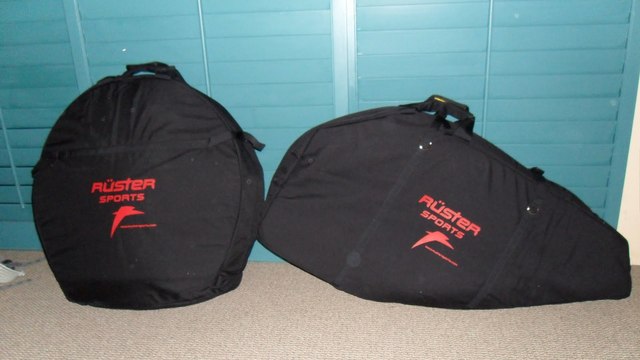
Slowtwitch: Is Ruster Sports a one man show? If yes, how many different roles do you end up playing? If not, who else is involved?
TJ: Ruster Sports is definitely not a one man show. Yes, I am the sole owner of the LLC, but there are many important players involved. Ashley is my first sounding board and my legal services (she is an attorney at Hartung and Schroeder in Des Moines, www.handslawfirm.com), my bike mechanics Steve Fry from Bike World in Iowa, and Patrick from Fair Wheel in Tucson get to see some crazy stuff. Eric Strauss and Dave Morse were instrumental in helping this get off the ground. My mom is retiring in June and she will soon start helping with the shipping and receiving. My cousin, Brice Lambi, in Boulder is my webmaster so he puts up with all my web demands. I do have to the play the role of engineer, product tester, accountant, marketing, and sales, but as I continue to grow I will soon start filling more and more of those roles.
Slowtwitch: Do you have plans for any new products in the future? Where do you see Ruster Sports, as a company, going in the future? Do you see your role growing/changing with regards to that?
TJ: I have my second product offering that was just launched, the Hen House Bicycle Travel Case. It is a case designed to skirt the airline excess baggage fees associated with a normal bicycle case. I have been traveling with this case or prototypes for 2 years and have not paid for excess luggage since. I have few other products that are in the workings. I am partnering with a company in Tucson for a new race product that should be introduced at the end of this year. I hope to be able to bring some more engineers on staff who share my passion for designing and inventing products. If there are any engineering types out there reading this who would like to collaborate on a project, feel free to contact me. I am always looking for creative and motivated people to work with on projects. Creativity is really the core of Ruster Sports. Be a Ruster, Rise and Shine!
For more on Ruster Sports and to check out their complete (and growing) line of products, check out their website at RusterSports.com.


